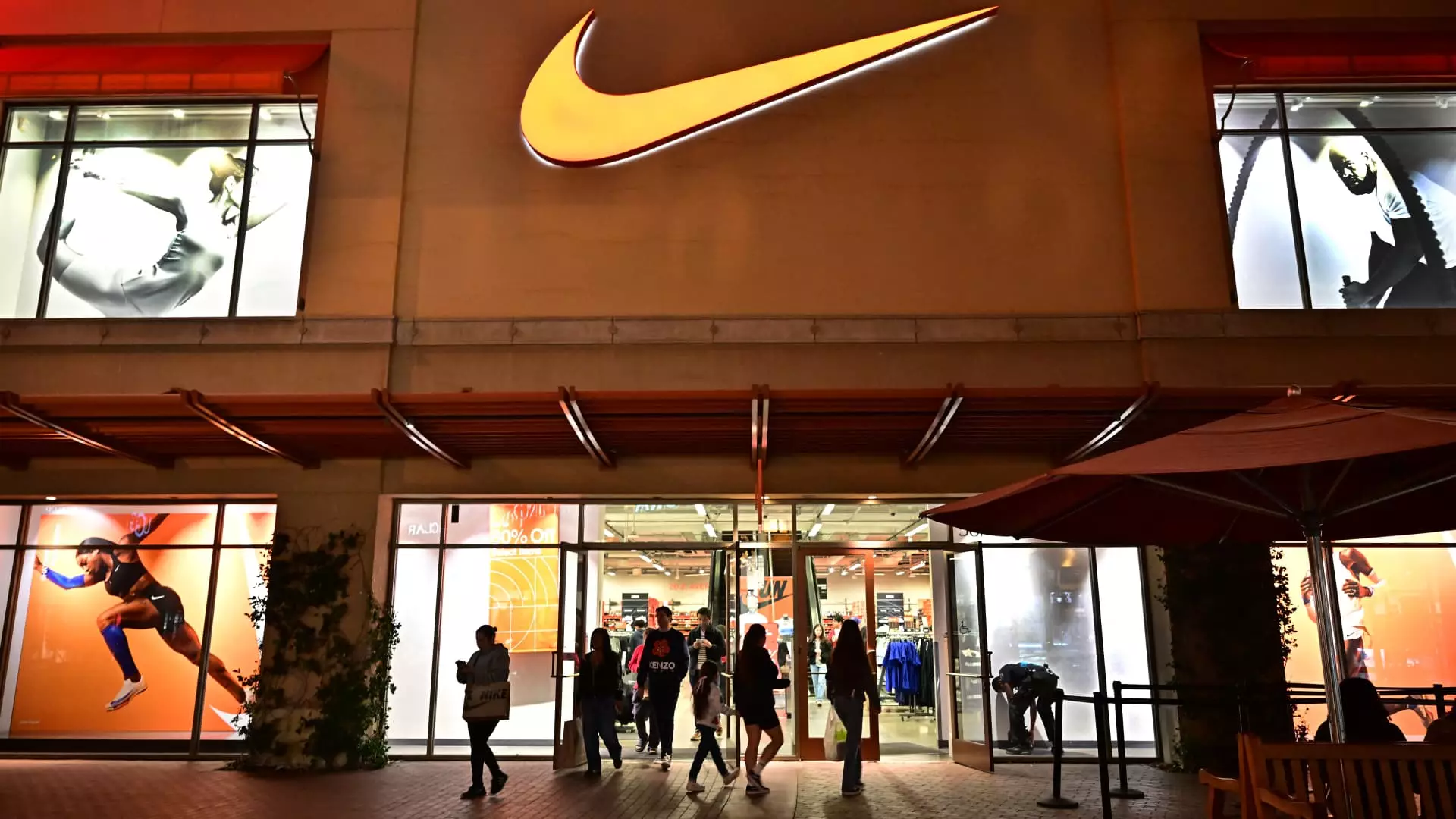Nike, a titan in the sportswear industry, has recently experienced a critical moment as it navigates through challenges under the leadership of new CEO Elliott Hill. With the fiscal second quarter of 2025 presenting an opportunity for reflection and rejuvenation, Nike’s recent financial performance has raised eyebrows and sparked interest in the company’s future direction. Hill’s proactive stance suggests a promising strategy aimed at revitalizing the brand’s core identity—sports.
In what can be described as a mixed bag of results, Nike outperformed Wall Street projections with an earnings per share (EPS) of 78 cents, significantly exceeding the anticipated 63 cents. Revenue also topped expectations at $12.35 billion versus a forecast of $12.13 billion. However, these figures mask deeper issues, as Nike’s net income dropped from $1.58 billion last year to $1.16 billion, a stark decline illustrating the underlying turmoil. Year-over-year sales fell 8%, revealing the brand’s struggles against a backdrop of shifting consumer preferences and increased competition in the market.
While the financial metrics are encouraging at a glance, they unveil a company that is grappling with serious operational dilemmas. Hill’s declaration of taking “immediate action” signals a necessary shift in company strategy that appears essential for long-term resilience.
Elliott Hill, who made his return to Nike after a hiatus, is determined to reposition the brand at the forefront of athletic performance. Transforming the company’s culture and innovative capability is paramount for Hill. His statement, “We are ready to go, and I’m confident you will see more moments of NIKE being NIKE again,” sets an ambitious tone for his leadership. With a history with Nike dating back to the 1980s, Hill’s knowledge of the company’s inner workings may provide a strategic edge.
The challenge of revitalizing Nike’s product lineup has arisen from relying too heavily on signature franchise products—Air Force 1s, Dunks, and Air Jordans—that have, over time, lost their allure. Hill is intent on recalibrating production practices to ensure exclusivity and desirability, albeit at the potential risk of short-term sales impacts.
One stark contrast in the current strategy is Nike’s decision to limit supply in hopes of fostering brand desirability. While this move could enhance the perceived value of its products, it raises important questions about aligning with consumer demand. The recent 13% decline in both retail and online sales indicates that while the brand consolidates its offerings, it risks alienating customers who may turn to competitors for broader options.
Additionally, steep discounting practices designed to clear excess inventory have placed pressure on Nike’s gross margins—down to 43.6%, albeit slightly better than investor expectations. The challenge lies in striking an effective balance between exclusivity and accessibility in products without sacrificing financial performance.
Nike’s struggles are further echoed in the financial woes of retail partners like Foot Locker, which has reported disappointing sales partly due to decreased interest in Nike products. This added complication serves as a reminder that Nike’s recovery rests not just on its internal strategies, but also on the health of its retail ecosystem. The interconnectedness of brand performance and retail viability is a critical chain that requires reinforcing.
Analysts and investors need to brace themselves for potential volatility as Hill’s turnaround strategy unfolds. The oversaturation of signature lines and market misjudgments point to a fundamental shift necessary within Nike’s business practices.
Nike stands at a crossroads under the stewardship of Elliott Hill, charged with rejuvenating the brand while responding to pressing market dynamics. Financial indicators may show promise, yet they are undercut by a reality that demands a comprehensive overhaul of operational methods. Hill’s commitment to placing sport back at the core of Nike’s identity acknowledges this urgent need.
As momentum builds in Hill’s early days, the sneaker giant faces the daunting challenge of restoring its legacy and brand strength while navigating a competitive and evolving landscape. Wall Street and consumers alike will be watching closely, searching for signs that Nike is not only weathering the storm but also on its way to emerging stronger than ever.


Leave a Reply